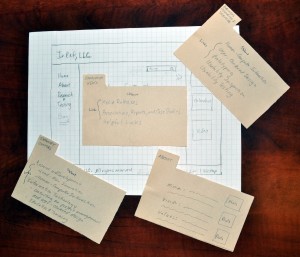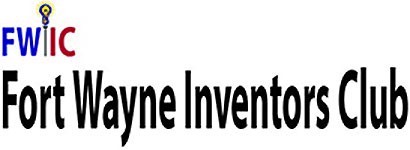You have an idea, but you are not really sure what to do first. One of the first things you can do is to create an inexpensive prototype. This will help you visualize what you want to accomplish and evaluate its feasibility. There are several types of prototypes. The low-fidelity type, which is the subject of this article, is very economical when compared to other prototyping methods.
Prototypes are models of an idea. They can be static or interactive, small or large. They can embody a design, aspect of functionality, or workflow. They do not have to be sophisticated—they are something that independent inventors can do themselves.
Low-fidelity prototypes (sometimes called paper prototypes) are not interactive and do not have any real functionality. They can be made out of paper, cardboard, or other inexpensive materials. Consider them physical models of an idea that can be manipulated by a person. (Other types of prototypes are more realistic and have increasing levels of functionality.)
To create a low-fidelity prototype, start with a written description of your idea and create a few sketches. Early sketches are not prototypes; they tell a story of what you want your innovation to do. (This type of sketch is often called a storyboard.) Next, you sketch out the invention itself. These sketches are often a suitable start for a low-fidelity prototype.
Sketches are great because they are iterative. You create a sketch and if you don’t like it, tear it up, throw it away, and start over. Once you get to a point where you have taken your idea as far as you can with sketches, start making low-fidelity prototypes. Create as many versions as you need just like sketching—multiple prototyping iterations are common.
Low-fidelity prototypes can be created from a series of sketches, lightweight mockups (e.g., craft paper), cardboard, or other materials. They are models that demonstrate envisioned functionality. (When demonstrating functionality with a low-fidelity prototype, someone has to manually manipulate the prototype since it is not automated.)
This blog shows how to make a cardboard prototype from start to finish. These types of prototypes are great for early usability testing. The storyboard that you developed earlier can be used as the basis for the testing scenario.
By prototyping something and using it to get early feedback, you can make smart decisions about the future of your project. They can also be used to explain your idea to others, such patent attorneys (if you want to patent it) or potential investors.

Early concept sketch of a website and several screens from a low-fidelity prototype. The screens were made to convert a similar sketch into a low-fidelity prototype that was suitable for usability testing. Image Credit: Author’s collection.
Early prototypes probably won’t look much like the finished project. I have included a sketch and a few paper prototype screens for a website with this blog. Here is a link to the final website. They look nothing alike and reflect several iterations of the design process. However, sketching and prototyping were useful for gathering early feedback about content and organization from real users.
Low-fidelity prototypes are great tools for independent inventors. They can help you envision early ideas in physical form and get feedback about them.
Do you have any experiences that you would like to share about prototyping? We would love to read them. Make a comment!
Image Credit: Prototyping a Board Game by Federico Fasce (Featured Image).


